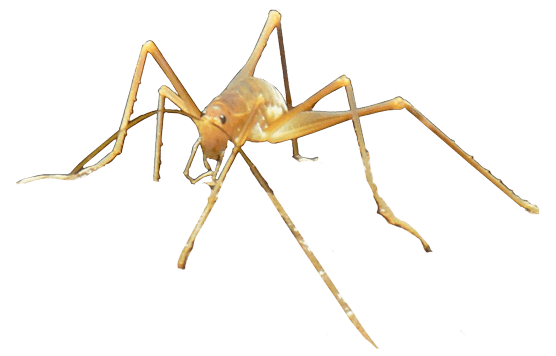Who Lives In Caves?
Caves are mysterious worlds with their own unique ecosystems. Unlike the surface, where sunlight supports abundant plant and animal life, cave environments are dark, humid, and often food-poor. Animals that live in and around caves must adapt to survive—and some of these adaptations are truly remarkable.
Cave Zones
Most caves have three distinct zones based on light levels:
- Entrance Zone – Sunlight, temperature, and moisture vary. Green plants can often grow here, and leaf litter provides food.
- Twilight Zone – Dim light, stable temperatures, and no green vegetation.
- Dark Zone – A world of total darkness, steady temperatures, and no plant growth.
Not every cave has all three zones, but understanding them helps us learn why certain animals live where they do.
Entrance Zone
Where daylight still reaches the cave. Temperatures and moisture shift through the day, and plants can grow near the opening. You might spot cave visitors—raccoons, birds, frogs—or cave crickets resting before a night’s forage.

Caves are mysterious worlds with their own unique ecosystems. Unlike the surface, where sunlight supports abundant plant and animal life, cave environments are dark, humid, and often food-poor. Animals that live in and around caves must adapt to survive—and some of these adaptations are truly remarkable.
Cave Zones
Most caves have three distinct zones based on light levels:
- Entrance Zone – Sunlight, temperature, and moisture vary. Green plants can often grow here, and leaf litter provides food.
- Twilight Zone – Dim light, stable temperatures, and no green vegetation.
- Dark Zone – A world of total darkness, steady temperatures, and no plant growth.
Not every cave has all three zones, but understanding them helps us learn why certain animals live where they do.
Types of Cave Life
Cave animals are often grouped by how much time they spend inside caves:
- Trogloxenes (“cave guests”) – Animals that use caves temporarily but depend on the surface for survival. Examples include bats, bears, raccoons, skunks, frogs, birds, and insects such as cave crickets.
- Troglophiles (“cave lovers”) – Species that can live inside or outside caves, such as some salamanders, frogs, beetles, and crayfish.
- Troglobites (“cave life”) – True cave dwellers, completely adapted to permanent darkness. These animals often have no eyes, no skin pigmentation, and long antennae or limbs to help them feel their way around. Examples include blind cavefish, cave crayfish, and cave shrimp.
Adaptations of Troglobites
Troglobites show some of the most fascinating cave adaptations:
- Loss of eyes and pigment – Energy isn’t wasted on unneeded traits.
- Enhanced senses – Extra-sensitive touch or vibration receptors help find food.
- Long limbs and antennae – To feel their way through darkness.
- Survival on little food – Many can go long stretches without eating.
The Cave Food Chain
Even in total darkness, life depends on sunlight. Since plants can’t grow in caves, food sources arrive in other ways:
- Floods wash in leaves, twigs, and debris.
- Bats, crickets, and other animals bring food energy from outside and leave droppings (guano), which become a base food source.
- Bacteria and fungi break down waste and debris into nutrients.
- Small invertebrates (beetles, mites, millipedes) feed on fungi and bacteria.
- Larger predators (salamanders, crayfish, cavefish) feed on those smaller animals.
This delicate food web supports only small populations. That’s why cave animals are especially vulnerable to disturbance.
Cave Conservation and Endangered Species
Because cave ecosystems are fragile, many cave animals are rare or endangered across the United States.
- Some cave shrimp, crayfish, salamanders, and blind cavefish exist only in very specific cave systems and are highly vulnerable to water pollution.
- Several bat species are declining due to habitat loss, human disturbance, white-nose syndrome, and pesticide use.
Protecting groundwater, respecting cave habitats, and limiting human impact are all essential to their survival.
Above Ground and Underground Connections
What happens on the surface directly affects the underground. Pollutants on the land can seep into caves through groundwater, threatening the species that depend on clean water to survive. Healthy cave systems are also vital to people—caves and karst aquifers supply drinking water to millions of Americans.
Bats are another important link between cave ecosystems and our daily lives. Many bat species that roost in caves eat enormous numbers of insects each night—including mosquitoes and crop pests—providing natural pest control and reducing the need for chemical pesticides.
Why It Matters
Cave ecosystems remind us how interconnected life is. A single bat colony can support hundreds of other species through its guano. A cave crayfish or shrimp may depend on clean groundwater flowing beneath the surface. And every creature, from tiny mites to large bats, plays a role in keeping these hidden worlds alive.
When exploring caves, remember: look, learn, but never disturb cave life.
- Bats are nature’s bug zappers – A single bat can eat up to 1,000 mosquitoes in just one hour.
- Life in the dark – Troglobites like blind cavefish and cave shrimp have no eyes or color but have extra-sensitive touch and vibration sensors.
- Three cave zones – Entrance (light, plants), Twilight (dim, no plants), and Dark (total darkness).
- Caves and clean water – Caves and karst aquifers supply drinking water to millions of Americans. What happens above ground directly affects life below.
- Tiny populations – Cave ecosystems support far fewer animals than the surface, making them especially fragile.
- Teamwork underground – From fungi and bacteria to crickets and salamanders, every species in a cave food web depends on the others.
Above: Hubbard’s Cave, in Tennessee, is considered The Nature Conservancy’s foremost cave preserve. The cave serves as a hibernaculum for two federally endangered bat species: the Indiana bat (Myotis sodalis), and the gray bat (Myotis grisescens). Hubbard’s is the largest hibernaculum for gray bats in the State of Tennessee. ACCA led the effort to construct the world’s largest cave gate at Hubbard’s Cave In 1985 in cooperation with The Tennessee Nature Conservancy, the Tennessee National Guard, Bat Conservation International, The U.S. Fish and Wildlife Service and the National Speleological Society. The gate was rebuilt and improved in 2006 under the direction of Roy D. Powers, Jr. Photo by: Jim Kennedy
The American Cave Conservation Association (ACCA) is a National 501 (c) 3 Nonprofit Organization.
Donations and Memberships are Deductible to the Fullest Extent Allowed by Law.
